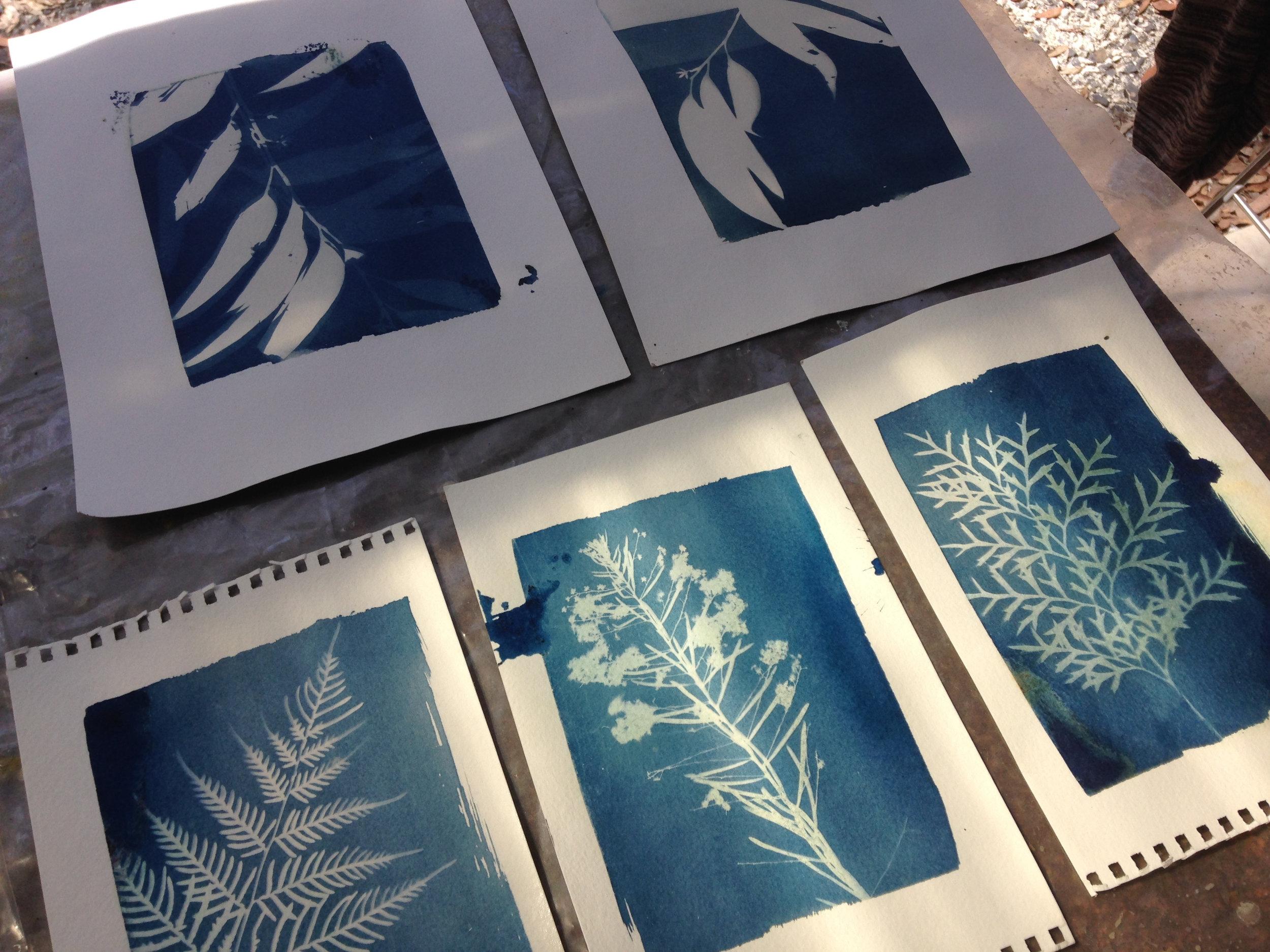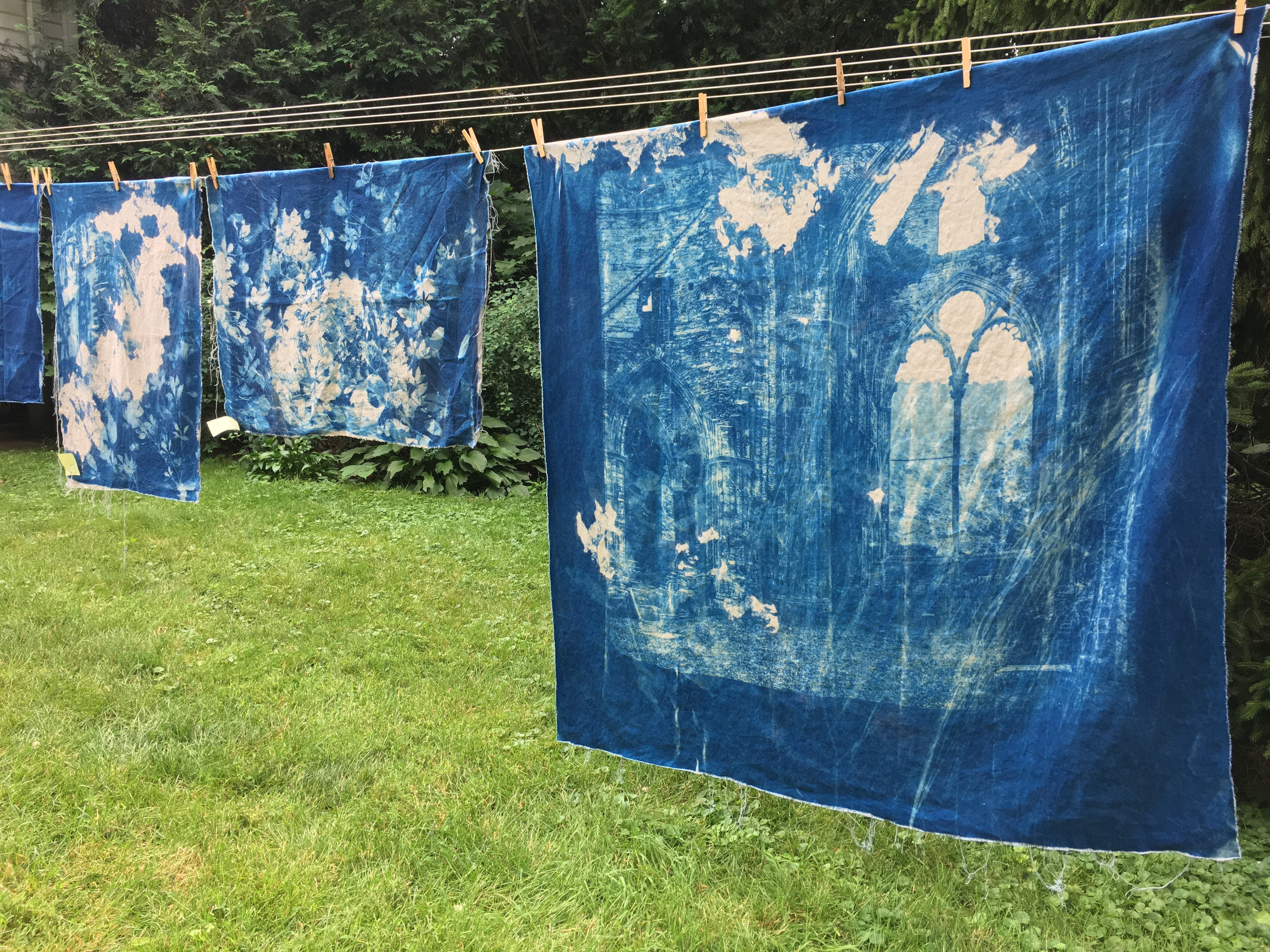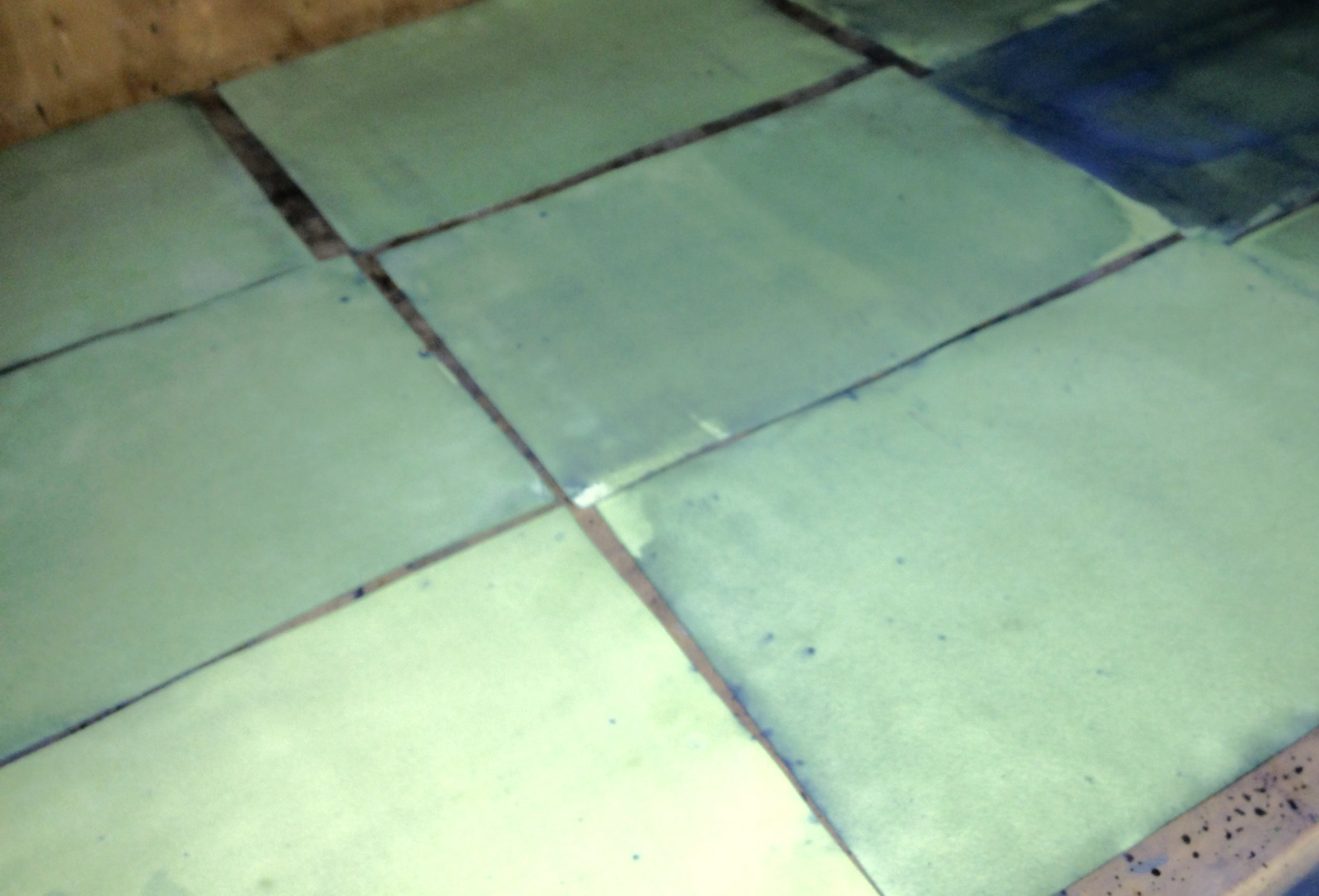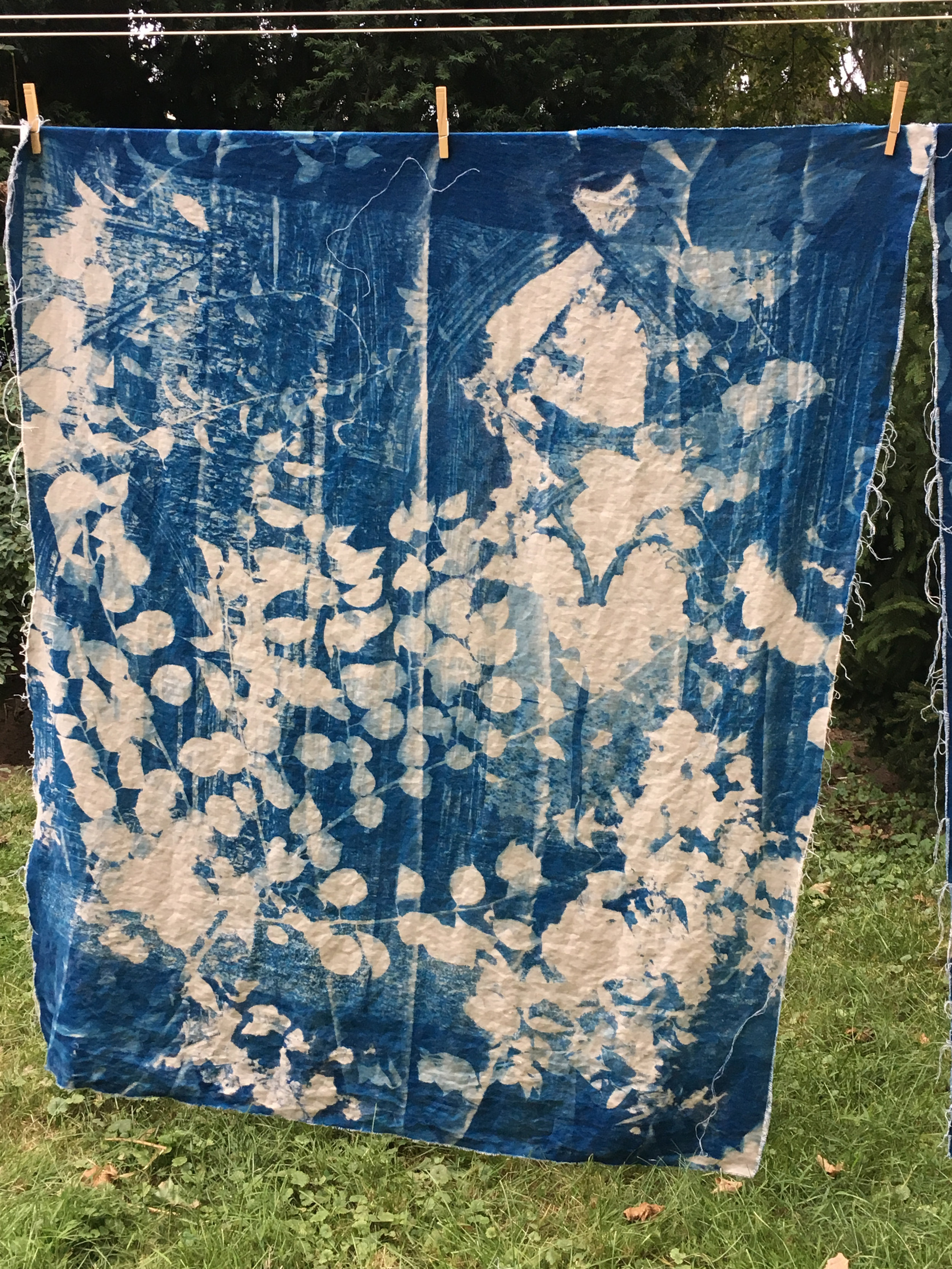Why Cyanotype?
For me, Juncture refers to a turning point, the place where the choice you make profoundly alters the trajectory of what follows, whether you know it at the time or not. The work I do using cyanotype exploits that concept, since chance is a huge factor in the outcome of the piece.
I started making cyanotypes of plant life a few years back, while traveling in Australia, my second home. I couldn’t take eucalyptus leaves home with me (plant material can’t be brought back into the country), and ordinary photos couldn’t capture the intimacy and emotion the shapes brought to me. But the cyanotypes did.
During an artist residency at BigCi, in the Blue Mountains west of Sydney, Australia, I began to layer the leaves, with their iconic, organic shapes, over digital ‘negatives’ of evidence of man- street signs, buildings, ruins. The unique combinations, overlapping and obscuring one another, were visually striking.
Using linen was at first a technical solution to the problem of rinsing large pieces of paper, and I saw huge advantages- the ability to create much larger works this way, not to mention the beautiful texture of the linen surface and the fluid nature of the final presentation.
It occurs to me that the making of my art is completely and inextricably wrapped around my daily life. I coat paper and fabric with photo-sensitive solutions in my basement, and leave them there in the dark to dry.
I wrap the coated paper in heavy black garbage bags, and wait for a sunny, windless afternoon. Then I cut weeds from my garden, and expose the paper on my back deck. Or I fill my car with 7 ft. negatives and a trunk full of yard waste, and drive over to the loading dock of my studio building, where I expose those big guys.
Then back in the garbage bags, back home, where I rinse them in the bathtub, then the washer and dryer, and hang them on the clothesline to get a good view- the first time I actually see the final result.
My process is controlled chaos. Experience has taught me the parameters and limits of the technique, and how best to manipulate the negative, the plant material, the exposures, etc. But season, sun and wind work their own magic, and play at least as big a part in the process. I love allowing chance and the weather to be a partner in the process.
Behind the obvious visual excitement I feel when I see the striking blue color and the relationships of the organic shapes intertwined with architecture, I think about the push and pull of human impact on the world with the untamed wildness of nature. In this tug of war, it seems sometimes as though man subjugates his environment, but nature is powerful, persistent, and resilient. It continues to exert its presence despite efforts by us to impose order and control. In effect my process lets go of that order and control, and the work is created in partnership with nature.
Cyanotype is an early photographic technique, invented in 1842. People are often familiar with it from architectural blueprints, or those solar-prints many of us played with as kids. The first known female photographer, Anna Atkins, used this process to create an illustrated book of photograms of plants. In the 19th and early 20th centuries, travel photographers often used cyanotype to make prints when they were away from their darkrooms. My first experiments with cyanotype were with plants, while traveling. A perfect fit, although I didn't realize why at the time.
Today, the technique is enjoying resurgence, because it’s easy, eco-friendly, analog in nature.
Google it. Try it. It’s fun!







